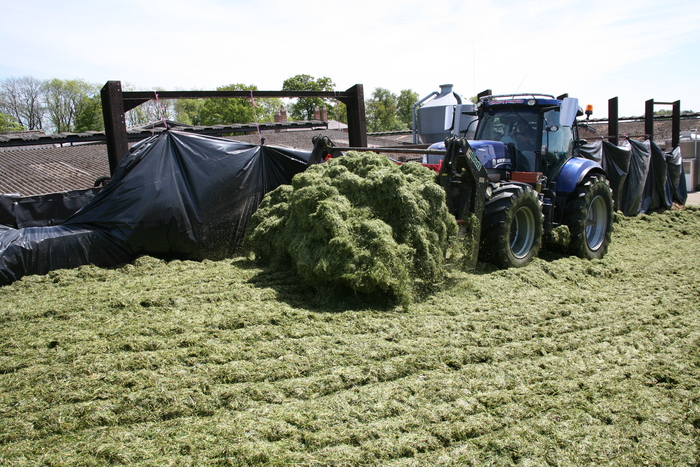A new range of forage inoculants featuring the first totally new bacterial strain approved for over 20 years will help significantly increase aerobic stability in clamps to reduce heating, while giving greater flexibility over when clamps can be opened according to forage specialists Lallemand Animal Nutrition.
The Magniva Platinum range from Lallemand Animal Nutrition replaces the Biotal range of inoculants in the UK and Ireland. They still contain L. buchneri40788 the most widely proven bacteria for improved aerobic stability, but also include L.hilgardiiI-4785, the first new bacterial strain approved for use in forage inoculants for over 20 years.
The Magniva Platinum range includes five crop and condition specific inoculants for lower dry matter grass, high dry matter grass, wholecrop and two maize products.
“Heating and waste in clamps is a major issue, with an estimated 15% of all clamps of conserved forage being wasted rather than fed, leading to lost energy, reduced feed values and higher feed costs,” explains Roy Eastlake, Lallemand Animal Nutrition’s Technical Support Manager. “Increasingly, farmers also need to open clamps quickly, particularly with maize and wholecrop but opening too soon can lead to further significant waste.
“To help farmers tackle this challenge Lallemand set out to find a bacteria more effective at tackling the causes of heating and so help farmers take control of silage quality.”
The new bacterial combination has been independently proven to help reduce the extent and consequences of waste while also giving greater flexibility over clamp opening.
“Following 10 years extensive R&D, the patented strain L. hilgardiiI-4785 has been registered for use in silage inoculants in combination with L. buchneri40788, which is already the most widely proven strain for aerobic stability.
“L. buchnerihas long been the gold standard for producing aerobically stable silage, but can take up to 60 days to have an effect. L.hilgardiion the other hand is active much earlier. Together they complement each other to deliver a more effective fermentation much sooner, and the impact of the combination greatly exceeds the two strains in isolation.”
Heating in silage is a direct consequence of the actions of yeasts and moulds which are present on all silage but remain largely inactive until they are exposed to oxygen. In aerobic conditions they use the sugars and lactic acid in the silage as a fuel source. In doing this, they produce heat.
The Magniva bacterial combination produces a number of antifungal compounds during the fermentation which significantly reduce the populations of both yeasts and moulds so reducing the threat of heating. Silages treated with the new combination took longer to heat up and didn’t heat up to such a high temperature, preserving feed value. They also remained more stable for longer.
Keeping silage cool means there is more energy to feed. Mr Eastlake says the benefit of reduced heating can be over 7500 more litres produced per 1000 tonnes of silage.
“The new combination is supplemented with homofermentative strains and enzymes as required to meet the specific challenges of different crops and harvesting conditions and help farmers take control of silage quality.”


